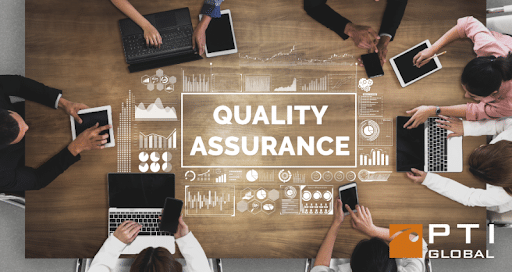To QA or Not to QA: Why Localization Quality Assurance Should Be Your First Step
In our increasingly global world, with over 6,500 languages spoken, more companies are eager to expand their reach and tap into new markets. If you’re still on the fence about going global or figuring out your localization strategy, let’s talk about the importance of Localization Quality Assurance (L10N QA).
Many folks see L10N QA as a last-minute task, but it really deserves to be one of your top priorities. This process not only influences the linguistic quality of your content but also plays a crucial role in shaping the overall customer experience.
Clear communication is essential for delivering your brand’s message effectively. It’s surprising how much effort companies put into perfecting their original content—tweaking the wording, tone, and style—only to overlook the importance of quality in translation and localization. This can lead to serious issues, affecting how users perceive your product.
Having spent decades in the localization industry, we’ve noticed a common trend: internationalization, translation, and localization often get treated as afterthoughts. They’re usually not included in the initial marketing or development plans, leading to a last-minute scramble. This rush can compromise quality, causing teams to work overtime just to meet tight deadlines.
So, before you decide how much L10N QA your product needs, let’s break down what it is and why it’s so important.
What Is Localization Quality Assurance?
L10N QA includes several review processes within the localization lifecycle, including translation post-editing, typically done through translation management systems. In contrast, L10N QA involves native linguistic specialists who assess the product in its actual context—whether it’s software, documentation, or a website. Key focus areas include:
- Internationalization Testing (I18N):
- This ensures your product is ready for localization and includes:
- Checking for hardcoded strings through pseudo-translations.
- Ensuring proper character rendering in different languages.
- Verifying search functionality with language-specific characters.
- Testing user-generated text inputs.
- Confirming installation and uninstallation processes in native languages.
- This ensures your product is ready for localization and includes:
- Linguistic Translation Quality: Here, specialists review translations in context to ensure they’re accurate, effective, and consistent with existing translations.
- Functional and User Experience Review: This ensures that the translated product works as intended, covering button functionality, hyperlinks, and the overall user experience.
- Visual Review: This focuses on how the product looks, checking for issues like text truncation, character corruption, misalignment, and font consistency.
Why Is L10N QA Important?
Most users prefer products that speak their native language. A product that communicates in their tongue makes it easier to understand and enhances the overall experience. As author Kate Zabriskie said, “the customer’s perception is your reality.” If your translations are off or if a product doesn’t work properly, it can significantly impact how customers view your brand.
Additionally, the customer experience (CX) includes every interaction with your brand—from inquiries before purchase to support after the sale. A poor localization experience can tarnish that perception and hurt customer loyalty.
While L10N QA might seem like an added cost, it’s really an investment in quality and customer satisfaction. A well-functioning, high-quality product is less likely to generate complaints, ultimately reducing support costs.
Steps to Ensure Quality in Your Global Expansion
How We Can Support You in Elevating Your Localization Quality Assurance
- Plan Ahead: Don’t treat L10N QA as an afterthought—integrating it into your development process is crucial for delivering a successful product and providing a great user experience. We’re here to help you from the very beginning, working with you to create a customized QA strategy that aligns seamlessly with your project timeline. Our team will ensure that quality is a core focus every step of the way.
- Choose the Right Specialists: Whether you’re partnering with external vendors or managing an in-house team, having linguistic QA specialists who fully understand your product goals and brand vision is essential. With our experienced specialists, who are not only skilled in localization but also adept at providing valuable insights into cultural norms and consumer behavior, we are committed to ensuring you have the right expertise by your side throughout the entire process.
- Collaborate with Development Teams: A solid testing plan and the right resources are key to quickly addressing any issues that arise. Our team will facilitate smooth collaboration between your localization and development teams, providing the tools and support necessary to streamline the QA process. We’ll be by your side, ensuring that communication flows effortlessly and issues are resolved promptly.
- Keep Communication Open: Establishing a strong feedback loop between your translators and linguistic QA specialists is vital for maintaining quality. We will implement effective communication channels that promote ongoing dialogue, allowing for real-time tracking of quality and the sharing of insights. Our goal is to foster continuous improvement throughout your localization efforts, ensuring that everyone involved is aligned and informed.
By partnering with us, you’ll have a dedicated ally at every step of your L10N QA journey. Together, we’ll ensure that your process is efficient, tailored to your needs, and positioned for success in the global market!









